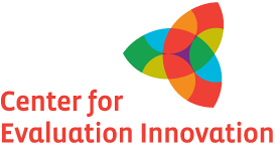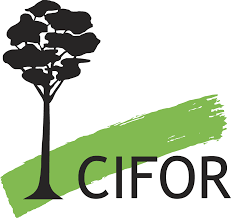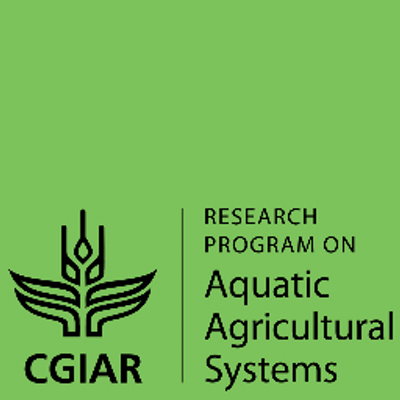Résultats de la recherche
Displaying 81 - 90 of 1271 results.
Innovation through action - An action research journey with smallholder farmers in Limpopo Province, South Africa: experiences of soil fertility management
This chapter documents the learning process within the framework of innovation of soil fertility management practices that emerged from the implementation of Participatory Extension Approach (PEA) as part of service delivery reorientation within the Limpopo Department of Agriculture in South Africa.The chapter gives a narrative description of what transpired during the interaction between researchers, extension officers and farmers, the processes involved, the lessons and the conclusion.
Sujet(s):
renforcement des capacités (RC)vulgarisationfacilitationsystèmes d'exploitation agricoleinnovationapprentissageapproches participativesrecherchePetits agriculteurs...
Année de publication:
2009Agricultural Innovation Systems: A Framework for Analysing the Role of the Government
This report reviews recent trends in agricultural innovation systems (AIS) and discusses the impact of a wide range of policies on the creation and diffusion of innovation in the agricultural and agrifood sector. It suggests a framework for analysing the role of governments in fostering increased innovation, with a view to helping to identify practical actions that governments could take to improve productivity growth, sustainable use of resources, and resilience to future market developments in national and global agriculture and agri-food systems.
Sujet(s):
renforcement des capacités (RC)Concepts au sujet de RCsystèmes d'innovationinnovationévaluation des besoinspolitiquesengagement du secteur publicrecherchedéveloppement ruralsecteur agroalimentaire...
Année de publication:
2013Pathways for Change: 10 Theories to Inform Advocacy and Policy Change Efforts
This brief report lays out ten theories of advocacy and policy change. These theories are intended to articulate the policy making process and identify causal connections supported by research to explain how and why a change may or may not occur. It further provides examples of the way in which advocates, funders, and evaluators can use these theories in their work.
Sujet(s):
promotion/plaidoyerrenforcement des capacités (RC)communicationsuivi et évaluation (S&E)réseaupolitiquesrecherche...
Année de publication:
2013Losing less and winning more: building capacity to go beyond the trade-offs between conservation and development in the Lower Mekong
This brief explains about a three-year research project (2006-09), conducted by the Center for International Forestry Research in the lower Mekong River countries (Cambodia, Laos and Vietnam). The best practices in design and implementation were identified through a broad review of the literature and an inventory of the multivariate techniques on a large set of variables. This research explored patterns among sites, project design, project activities and management.
Sujet(s):
Année de publication:
2009Monitoring and Evaluation Strategy Brief
This brief provides an overview of the monitoring and evaluation (M&E) system of the CGIAR Research Program on Aquatic Agricultural Systems (AAS) and describes how the M&E system is designed to support the program to achieve its goals. The AAS program aims to improve the lives of 22 million people dependent upon aquatic agricultural systems by 2024 through research in development.
Sujet(s):
renforcement des capacités (RC)apprentissagesuivi et évaluation (S&E)systèmes de S & Eoutils de S & Eapproches participativesrecherche participative...
Année de publication:
2014Study on impacts of farmer-led research supported by civil society organizations
Based on eleven case studies from Africa, Asia, and Latin America, this report describes farmer-led research findings and their dissemination, and analyzes available evidence on the impact of farmer-led approaches to agricultural research and development on rural livelihoods, local capacity to innovate and adapt, and influence on governmental institutions of agricultural research and development.
Sujet(s):
Service de vulgarisationrenforcement des capacités (RC)changement climatiqueéducationsystèmes d'innovationapprentissageapproches participativesrechercherecherche participativerecherche et développement (R & D)Petits agriculteurs...
Année de publication:
2014New Organisational and Institutional Vehicles for Managing Innovation in South Asia: Opportunities for Using Research for Technical Change and Social Gain
This paper sets out to explore the nature of new organisational and institutional vehicles for managing innovation in order to put research into use for social gain. It has reviewed four classes of such vehicles found in South Asia.
Sujet(s):
Année de publication:
2010Linking international agricultural research knowledge with action for sustainable development
This research refers to the application of a innovation framework to sustainable livestock development research projects in Africa and Asia. The focus of these projects ranged from pastoral systems to poverty and ecosystems services mapping to market access by the poor to fodder and natural resource management to livestock parasite drug resistance.
Sujet(s):
renforcement des capacités (RC)systèmes d'innovationapprentissageapproches participativesrechercherecherche pour le développement (R4D)...
Année de publication:
2009Performance Indicators for Agricultural Innovation Systems in the ACP Region
This synthesis report presents the outputs of the workshop organised by CTA at its headquarters in Wageningen, The Netherlands, 15-17 July 2008. The outputs are presented in two main parts, each corresponding to one of the workshop objectives, and ends with a section on the way forward as suggested by the workshop participants. It also includes a first attempt to come to a consolidated generic framework on AIS performance indicators, based on the outputs of the different working groups.
Sujet(s):
promotion/plaidoyerrenforcement des capacités (RC)Concepts au sujet de RCvulgarisationévaluation de l'impactsystèmes d'innovationinnovationsuivi et évaluation (S&E)politiquesrecherche et développement (R & D)recherche pour le développement (R4D)chaînes de valeur...
Année de publication:
2009Evaluation as a multi-stakeholder learning process: the Programme for Capacity and Theory Building for Universities and Research Centres in Endogenous Development (CAPTURED ) in Bolivia , Ghana and India
The present article reviews the results and methodological design of an evaluation at higher education centres in Bolivia, Ghana and India. The ambition of these programmes was to integrate endogenous knowledge and values into education and research programmes. The evaluation provides an example of a mixed methods design that allowed for inclusion and appreciation of perspectives of different stakeholders. An evaluation team has to consider which set of methods is responding to the project context and how the methods complement each other and can be adapted to the case.
Sujet(s):
renforcement des capacités (RC)éducationConnaissance localeapprentissageprocessus multipartitesrecherchedéveloppement rural...
Année de publication:
2013Pages
Sorting block
Filtrer par idiome
Filtrer par sujet(s)
- (-) Remove research filter researchresearch
- recherche (160) Apply recherche filter recherche
- recherche (54) Apply recherche filter recherche
- recherche (78) Apply recherche filter recherche
- recherche (693) Apply recherche filter recherche
- recherche (127) Apply recherche filter recherche
- recherche (148) Apply recherche filter recherche
- recherche (69) Apply recherche filter recherche
- recherche (158) Apply recherche filter recherche
- recherche (264) Apply recherche filter recherche
- recherche (100) Apply recherche filter recherche
- recherche (171) Apply recherche filter recherche
- recherche (185) Apply recherche filter recherche
- recherche (105) Apply recherche filter recherche
- recherche (83) Apply recherche filter recherche
- recherche (924) Apply recherche filter recherche
- recherche (324) Apply recherche filter recherche
- recherche (302) Apply recherche filter recherche
- recherche (185) Apply recherche filter recherche
- recherche (348) Apply recherche filter recherche
- recherche (151) Apply recherche filter recherche
- recherche (74) Apply recherche filter recherche
- recherche (314) Apply recherche filter recherche
- recherche (287) Apply recherche filter recherche
- recherche (358) Apply recherche filter recherche
- recherche (223) Apply recherche filter recherche
- recherche (258) Apply recherche filter recherche
- recherche (266) Apply recherche filter recherche
- recherche (239) Apply recherche filter recherche
- recherche (459) Apply recherche filter recherche
Filtrer par auteur(s)
- recherche (9) Apply recherche filter recherche
- recherche (7) Apply recherche filter recherche
- recherche (5) Apply recherche filter recherche
- recherche (5) Apply recherche filter recherche
- recherche (5) Apply recherche filter recherche
- recherche (5) Apply recherche filter recherche
- recherche (5) Apply recherche filter recherche
- recherche (8) Apply recherche filter recherche
- recherche (7) Apply recherche filter recherche
- recherche (10) Apply recherche filter recherche
- recherche (4) Apply recherche filter recherche
- recherche (17) Apply recherche filter recherche
- recherche (6) Apply recherche filter recherche
- recherche (6) Apply recherche filter recherche
- recherche (15) Apply recherche filter recherche
- recherche (5) Apply recherche filter recherche
- recherche (5) Apply recherche filter recherche
- recherche (5) Apply recherche filter recherche
- recherche (6) Apply recherche filter recherche
- recherche (12) Apply recherche filter recherche
- recherche (18) Apply recherche filter recherche
- recherche (5) Apply recherche filter recherche
- recherche (5) Apply recherche filter recherche
- recherche (9) Apply recherche filter recherche
- recherche (5) Apply recherche filter recherche
- recherche (7) Apply recherche filter recherche
- recherche (5) Apply recherche filter recherche
- recherche (9) Apply recherche filter recherche
- recherche (5) Apply recherche filter recherche
- recherche (5) Apply recherche filter recherche
- recherche (5) Apply recherche filter recherche
- recherche (4) Apply recherche filter recherche
- recherche (11) Apply recherche filter recherche
- recherche (5) Apply recherche filter recherche
- recherche (7) Apply recherche filter recherche
- recherche (22) Apply recherche filter recherche
- recherche (9) Apply recherche filter recherche
- recherche (5) Apply recherche filter recherche
- recherche (11) Apply recherche filter recherche
- recherche (6) Apply recherche filter recherche
- recherche (7) Apply recherche filter recherche
- recherche (5) Apply recherche filter recherche
- recherche (5) Apply recherche filter recherche
- recherche (5) Apply recherche filter recherche
- recherche (15) Apply recherche filter recherche
- recherche (5) Apply recherche filter recherche
- recherche (4) Apply recherche filter recherche
- recherche (6) Apply recherche filter recherche
- recherche (5) Apply recherche filter recherche
- recherche (18) Apply recherche filter recherche
Filtrer par pays
- recherche (78) Apply recherche filter recherche
- recherche (76) Apply recherche filter recherche
- recherche (75) Apply recherche filter recherche
- recherche (59) Apply recherche filter recherche
- recherche (53) Apply recherche filter recherche
- recherche (49) Apply recherche filter recherche
- recherche (44) Apply recherche filter recherche
- recherche (43) Apply recherche filter recherche
- recherche (42) Apply recherche filter recherche
- recherche (42) Apply recherche filter recherche
- recherche (35) Apply recherche filter recherche
- recherche (34) Apply recherche filter recherche
- recherche (33) Apply recherche filter recherche
- recherche (32) Apply recherche filter recherche
- recherche (32) Apply recherche filter recherche
- recherche (31) Apply recherche filter recherche
- recherche (30) Apply recherche filter recherche
- recherche (29) Apply recherche filter recherche
- recherche (29) Apply recherche filter recherche
- recherche (28) Apply recherche filter recherche
- recherche (28) Apply recherche filter recherche
- recherche (26) Apply recherche filter recherche
- recherche (24) Apply recherche filter recherche
- recherche (24) Apply recherche filter recherche
- recherche (23) Apply recherche filter recherche
- recherche (23) Apply recherche filter recherche
- recherche (23) Apply recherche filter recherche
- recherche (20) Apply recherche filter recherche
- recherche (20) Apply recherche filter recherche
- recherche (19) Apply recherche filter recherche
- recherche (19) Apply recherche filter recherche
- recherche (19) Apply recherche filter recherche
- recherche (19) Apply recherche filter recherche
- recherche (18) Apply recherche filter recherche
- recherche (17) Apply recherche filter recherche
- recherche (17) Apply recherche filter recherche
- recherche (17) Apply recherche filter recherche
- recherche (17) Apply recherche filter recherche
- recherche (17) Apply recherche filter recherche
- recherche (16) Apply recherche filter recherche
- recherche (15) Apply recherche filter recherche
- recherche (15) Apply recherche filter recherche
- recherche (15) Apply recherche filter recherche
- recherche (15) Apply recherche filter recherche
- recherche (15) Apply recherche filter recherche
- recherche (15) Apply recherche filter recherche
- recherche (15) Apply recherche filter recherche
- recherche (14) Apply recherche filter recherche
- recherche (13) Apply recherche filter recherche
- recherche (13) Apply recherche filter recherche
Filtrer par éditeur(s)
- (-) Remove Consultative Group for International Agricultural Research (CGIAR) filter Consultative Group for International Agricultural Research (CGIAR)Consultative Group for International Agricultural Research (CGIAR)
- recherche (106) Apply recherche filter recherche
- recherche (57) Apply recherche filter recherche
- recherche (54) Apply recherche filter recherche
- recherche (46) Apply recherche filter recherche
- recherche (29) Apply recherche filter recherche
- recherche (28) Apply recherche filter recherche
- recherche (28) Apply recherche filter recherche
- recherche (20) Apply recherche filter recherche
- recherche (19) Apply recherche filter recherche
- recherche (18) Apply recherche filter recherche
- recherche (18) Apply recherche filter recherche
- recherche (18) Apply recherche filter recherche
- recherche (13) Apply recherche filter recherche
- recherche (13) Apply recherche filter recherche
- recherche (12) Apply recherche filter recherche
- recherche (12) Apply recherche filter recherche
- recherche (11) Apply recherche filter recherche
- recherche (11) Apply recherche filter recherche
- recherche (11) Apply recherche filter recherche
- recherche (10) Apply recherche filter recherche
- recherche (10) Apply recherche filter recherche
- recherche (10) Apply recherche filter recherche
- recherche (9) Apply recherche filter recherche
- recherche (9) Apply recherche filter recherche
- recherche (8) Apply recherche filter recherche
- recherche (8) Apply recherche filter recherche
- recherche (8) Apply recherche filter recherche
- recherche (8) Apply recherche filter recherche
- recherche (8) Apply recherche filter recherche
- recherche (7) Apply recherche filter recherche
- recherche (7) Apply recherche filter recherche
- recherche (7) Apply recherche filter recherche
- recherche (7) Apply recherche filter recherche
- recherche (7) Apply recherche filter recherche
- recherche (7) Apply recherche filter recherche
- recherche (7) Apply recherche filter recherche
- recherche (6) Apply recherche filter recherche
- recherche (6) Apply recherche filter recherche
- recherche (6) Apply recherche filter recherche
- recherche (6) Apply recherche filter recherche
- recherche (6) Apply recherche filter recherche
- recherche (6) Apply recherche filter recherche
- recherche (6) Apply recherche filter recherche
- recherche (6) Apply recherche filter recherche
- recherche (6) Apply recherche filter recherche
- recherche (5) Apply recherche filter recherche
- recherche (5) Apply recherche filter recherche
- recherche (5) Apply recherche filter recherche
- recherche (5) Apply recherche filter recherche
Filtrer par region
Filtrer par type
- recherche (2) Apply recherche filter recherche
- recherche (79) Apply recherche filter recherche
- recherche (35) Apply recherche filter recherche
- recherche (74) Apply recherche filter recherche
- recherche (14) Apply recherche filter recherche
- recherche (1) Apply recherche filter recherche
- recherche (20) Apply recherche filter recherche
- recherche (21) Apply recherche filter recherche
- recherche (76) Apply recherche filter recherche
- recherche (22) Apply recherche filter recherche
- recherche (1) Apply recherche filter recherche
- recherche (26) Apply recherche filter recherche
- recherche (12) Apply recherche filter recherche
- recherche (7) Apply recherche filter recherche
- recherche (2) Apply recherche filter recherche
- recherche (1) Apply recherche filter recherche
- recherche (4) Apply recherche filter recherche
- recherche (502) Apply recherche filter recherche
- recherche (1) Apply recherche filter recherche
- recherche (2) Apply recherche filter recherche
- recherche (5) Apply recherche filter recherche
- recherche (1) Apply recherche filter recherche
- recherche (3) Apply recherche filter recherche
- recherche (1) Apply recherche filter recherche
- recherche (4) Apply recherche filter recherche
- recherche (10) Apply recherche filter recherche
- recherche (30) Apply recherche filter recherche
- recherche (7) Apply recherche filter recherche
- recherche (186) Apply recherche filter recherche
- recherche (25) Apply recherche filter recherche
- recherche (5) Apply recherche filter recherche
- recherche (1) Apply recherche filter recherche
- recherche (91) Apply recherche filter recherche
Filtrer par αnnée de publication
- recherche (1) Apply recherche filter recherche
- recherche (2) Apply recherche filter recherche
- recherche (2) Apply recherche filter recherche
- recherche (6) Apply recherche filter recherche
- recherche (6) Apply recherche filter recherche
- recherche (8) Apply recherche filter recherche
- recherche (17) Apply recherche filter recherche
- recherche (13) Apply recherche filter recherche
- recherche (26) Apply recherche filter recherche
- recherche (37) Apply recherche filter recherche
- recherche (37) Apply recherche filter recherche
- recherche (62) Apply recherche filter recherche
- recherche (58) Apply recherche filter recherche
- recherche (88) Apply recherche filter recherche
- recherche (83) Apply recherche filter recherche
- recherche (61) Apply recherche filter recherche
- recherche (82) Apply recherche filter recherche
- recherche (130) Apply recherche filter recherche
- recherche (103) Apply recherche filter recherche
- recherche (135) Apply recherche filter recherche
- recherche (143) Apply recherche filter recherche
- recherche (93) Apply recherche filter recherche
- recherche (47) Apply recherche filter recherche
- recherche (12) Apply recherche filter recherche
- recherche (11) Apply recherche filter recherche
- recherche (6) Apply recherche filter recherche









